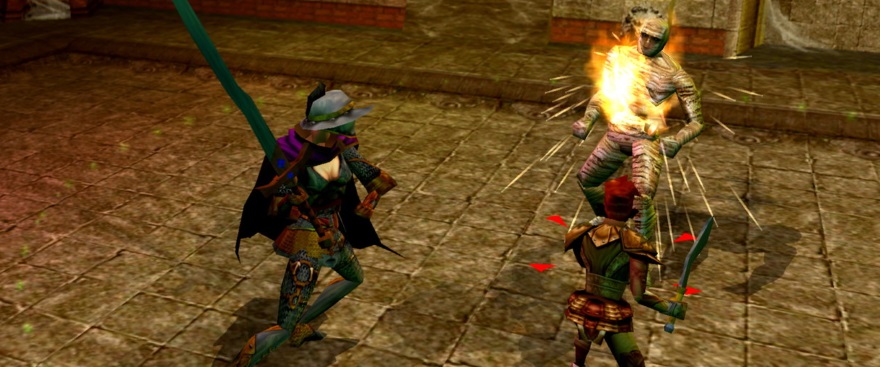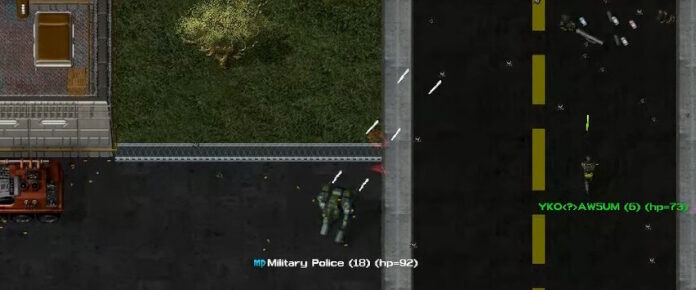
At the end of June 2014, dozens of online worlds flickered and vanished with the flip of a switch. It was a online apocalypse the likes of which we had not seen in quite some time, although you might be forgiven for not having heard of it.
When GameSpy Technology went offline on May 31st, 2014, dozens of EA games that relied on the platform for multiplayer functionality lost their online components. Because of this, Neverwinter Nights and Neverwinter Nights 2 found that several of their persistent player-made and -run worlds were in danger. For over a decade, players had poured creative energies and roleplaying enthusiasm into these micro-MMOs.
Fortunately, players swung into action to work around the shutdown, keeping their worlds alive and detached from GameSpy’s umbilical cord. I saw this event as a wake-up call for people like yours truly who are acquainted primarily with BioWare and Obsidian’s single-player offerings and are ignorant of the larger Neverwinter Nights community out there. Let’s take a look at this engrossing online realms and how it came to be.

Power points to the players
At the time, it was one of the biggest projects that BioWare had tackled to date. Created as a spiritual successor of sorts to AOL’s 1991 Neverwinter Nights while being influenced by Ultima Online, Neverwinter Nights took a sizable team at BioWare five years to make.
“Compared to Baldur’s Gate, Neverwinter Nights allocated five times the manpower to making the game-creation tools suite,” one of BioWare’s devs noted in a post-mortem. “Our experience online was that we had the most fun when we were adventuring with a moderate-sized group of friends, with a game master creating an adventure for us in real time. This experience was one of the foundations of what we wanted to capture in Neverwinter Nights.”
The scope of the game was staggering: It included not only a sizable BioWare-worthy single-player campaign but also a multiplayer option, modding tools, and — most importantly for the purposes of this column — the ability for players to make and host “persistent worlds.”
BioWare released Neverwinter Nights on June 18th, 2002. The game quickly become one of the studio’s most profitable titles. Between 2003 and 2006, the studio created several expansions and adventure modules before passing the torch to Obsidian (aka Li’l BioWare), which created the sequel. Neverwinter Nights 2 and its expansions had a good run and was well-received, although there was a strong divide among players as to which title was superior.
Perhaps the debate between the two was pointless, as both games saw the rise of a very active modding and DMing community. By deciding to bow out (for the time being) of running its own persistent online world and instead empowering players to make their own, BioWare truly opened up a Pandora’s Box of wonders and the occasional blunder.

All of these persistent worlds are yours except Europa
As I mentioned earlier in this column, Neverwinter Nights persistent worlds were, for the most part, micro-MMOs. Player dungeon masters could take on the role of all-powerful developer, setting the rules, enforcing a certain style of gameplay, and molding the world as they saw fit.
It must be emphasized just how powerful these modding tools were. “The packaging of proprietary custom resource packs called haks permitted modders to create and add anything to the game — new tilesets, creature models, item models, music, sound effects, load screens, skyboxes, classes, skills, feats, nearly anything,” EQ Hammer noted.
One of these persistent worlds could host up to 96 people at a time. While this was a number far smaller than traditional MMOs, it still eclipsed traditional small-group multiplayer campaigns in the NWN games. Other than size, the biggest limitation to persistent worlds was the mandate that they be made free of charge for all for copyright reasons.
Apart from that, the sky was the limit, and persistent worlds took off. Dungeon masters had the freedom to create specific game worlds in virtually any genre, guide campaigns personally, and even hop into NPCs to add a little live roleplaying realism. The servers quickly separated into specific rulesets, including action (PvE fighting), roleplaying, PvP, social, story, and so-on. Unlike their sometimes-marginalized status in modern MMOs, roleplayers in these persistent worlds were a vibrant, active force that kept the servers running.
As time went by and the studios began to ignore the games, player-creators found themselves picking up the slack of jury-rigging fixes for these aging titles. As EQ Hammer put it, “Amateur engineers developed SQL database support for the game, which allowed persistent-world servers to bypass hardcoded flaws in the engine and allowed them to introduce true persistence in the form of housing, banking, and more. When BioWare’s master authentication servers for the game went down, players quickly created and freely disseminated their own server-side authentication scripts.”

A sampling of Neverwinter Nights persistent worlds
While many of these persistent worlds have quieted down, there are still scads of them in existence. In fact, NWNList Scry once listed as many 851 persistent worlds spread between the two games, with the first Neverwinter Nights having twice as many as the second.
Here’s are a few of the popular Neverwinter Nights and Neverwinter Nights 2 worlds currently running:
- Ravenloft: Prisoners of the Mist is an immersive, story-oriented roleplay server that takes place in the gothic-themed campaign world.
- Gem of the North is based around the northern locations of the Forgotten Realms. Nowadays it is placed between Rassalanter (a bit north of Waterdeep).
- Miss Planescape Torment? Sigil: City of Doors seeks to recreate that unique fantasy setting!
- Kingdom of Haven is a persistent roleplay world based on Forgotten Realms 3.5. It’s been established since 2007 and offers a wide range of diverse roleplay, adult themes, 25+ custom classes, and monthly content.
- Baldur’s Gate is a popular Neverwinter Nights 2 shard set in the game world that BioWare first made famous.
- Realms of Trinity is a story-driven roleplay world set in Forgotten Realms.
 Believe it or not, MMOs did exist prior to World of Warcraft! Every two weeks, The Game Archaeologist looks back at classic online games and their history to learn a thing or two about where the industry came from… and where it might be heading.
Believe it or not, MMOs did exist prior to World of Warcraft! Every two weeks, The Game Archaeologist looks back at classic online games and their history to learn a thing or two about where the industry came from… and where it might be heading.














